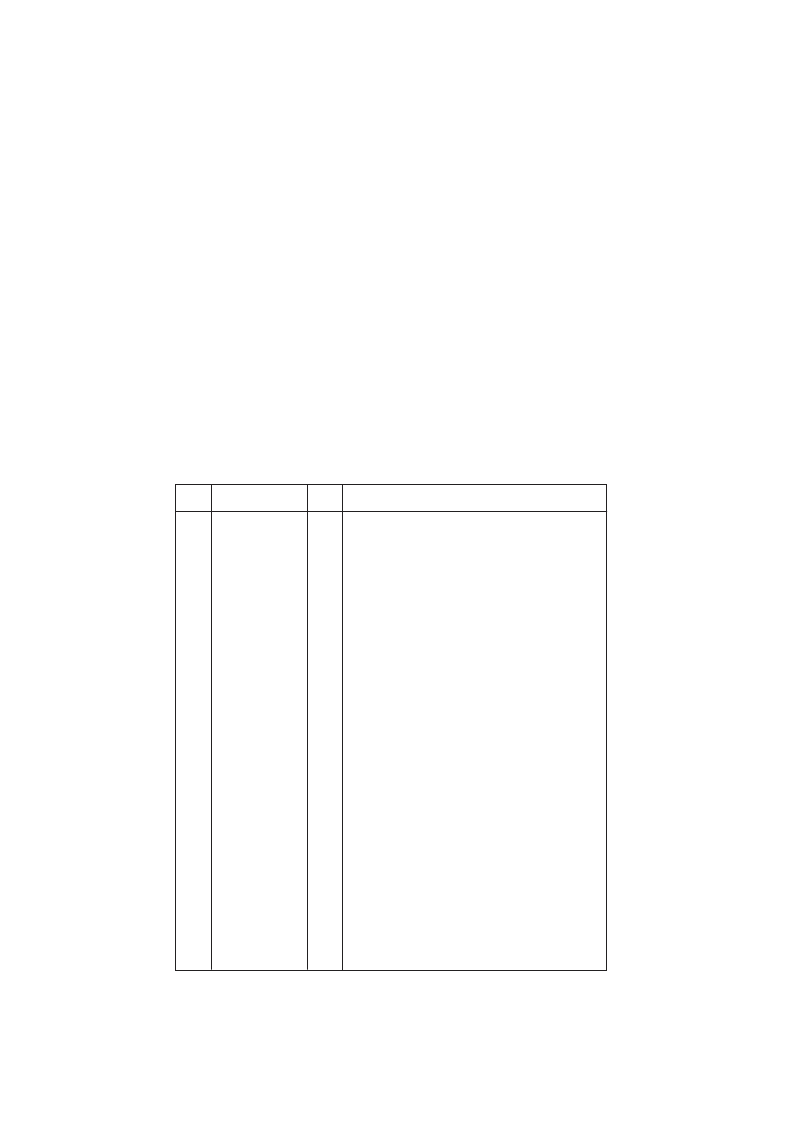- 您現(xiàn)在的位置:買賣IC網(wǎng) > PDF目錄384577 > JUPITER (Mitel Networks Corporation) CDMA and FM (AMPS) I/Q Filter Preliminary Information PDF資料下載
參數(shù)資料
| 型號: | JUPITER |
| 廠商: | Mitel Networks Corporation |
| 英文描述: | CDMA and FM (AMPS) I/Q Filter Preliminary Information |
| 中文描述: | CDMA和調(diào)頻(省級)的I / Q濾波器的初步信息 |
| 文件頁數(shù): | 2/9頁 |
| 文件大小: | 166K |
| 代理商: | JUPITER |

JUPITER
2
CIRCUIT DESCRIPTION
The block diagram of the JUPITER filter is shown in
Fig. 3. Two tunable active low-pass gyrator filters are designed
with balanced I/Q inputs and outputs.
CDMA MODE
In CDMA mode the filter (F1 on Fig. 3) is a 7th order 0.1dB
ripple continuously tunable elliptic type with the corner frequency
tuned to 690kHz for best stop band attenuation and minimal
phase error (in the overall system). Variable gain stages after the
filter provide the gain control capability. Overall, each of the
CDMA I/Q channels has 45dB nominal voltage gain with the Q
channel having
±
2dB gain adjustment range. Separate I/Q
frequency tuning functions are built into the device.
FM MODE
In FM mode the same filter is used; however, the biasing is
designed such that the current density in the transconductor cells
is reduced by a factor of 46, changing the filter’s cutoff frequency
to 15kHz. The filter characteristic of the main channel filter
(gyrator filter) remains the same, i.e. a 0.1dB 7th order elliptic. In
FM mode additional 2nd order Sallen and Key 0.1dB ripple
Chebeyshev filters (F2) are included in the signal path prior to the
gyrators. These improve the out-of-band blocking of the overall
filter. Different amplifiers are used in FM mode to those used in
CDMA mode to enable optimization of the gain distribution in FM
mode for current consumption and dynamic range.
OPERATION
Signal inputs are DC coupled in both CDMA and FM modes.
The device modes are selected by CMOS compatible logic
signals as shown in Table 2. An external resistor should be
connected between RTUNE and ground to set internal currents;
a resistor with a tolerance of
6
5% and a temperature coefficient
of less than 100ppm is recommended. V
(pin 18) should be
decoupled to V
CC
to give optimum supply rejection.
A test mode is provided for filter calibration. In this mode, a test
signal is applied to the V
input (pin 7) with ENTEST held high.
The test mode is designed to interface with the PLUTO baseband
processor, which can provide the test signal and I/QTUNE
voltages and calibrates the filters using an nternal auto calibration
algorithm. The algorithm generates two test frequencies and
calibrates the filters to give the correct attenuation at the upper
frequency. The calibration is normally carried out in CDMA
mode: the FM filter performance is scaled accordingly.
Pins are provided for DC offset control for I and Q channels
(I_OFFSET, I_OFFSETB, Q_OFFSET and Q_OFFSETB). In
typical operation, the I_OFFSET/Q_OFFSET pins would be
controlled by a voltage derived from the baseband processor.
However, it is also possible to minimise the DC offset using
external components; this is primarily intended for test purposes.
These feedback components between IOUT/QOUT and
I_OFFSET/Q_OFFSET are shown in Fig. 4 but would not be
used in the normal application
In test mode, these offset controls are disabled and the offsets
are controlled using on-chip feedback. The loop filter for this
feedback uses external 10nF capacitors on pins I_OC_TEST/B
and Q_OC_TEST/B as shown in Fig. 4.
I/O
I
I
I
I
I
I
I
I
I
I
O
O
P
P
O
O
I
I
I
P
I
I
I
I
I
I
Description
Q channel offset control in test mode
Q channel offset control in test mode (balanced)
Q channel CDMA/FM input.
Q channel CDMA/FM input (balanced)
Q channel offset control
Q channel offset control (high gain mode)
Test mode signal input for tuning operation
Precision resistor for current definition (18k)
I filter tuning control
Q filter tuning control
Q channel gain adjust voltage, VGC
Q channel CDMA/FM output
Q channel CDMA/FM output (balanced)
Supply
Ground
I channel CDMA (balanced)
I channel CDMA
Reference voltage decouple
Mode control (see Table 2)
Mode control (see Table 2)
Mode control (see Table 2)
Ground (substrate)
I channel offset control (high gain mode)
I channel offset control
I channel CDMA (balanced)
I channel CDMA
I channel offset control in test mode (balanced)
I channel offset control in test mode
Name
Q_OC_TEST
Q_OC_TESTB
QIN
QINB
Q_OFFSET
Q_OFFSETB
V
TEST
RTUNE
ITUNE
QTUNE
QBAL
QOUT
QOUTB
V
CC
V
EE
2
IOUTB
IOUT
V
REF
ENTEST
ENABLE
MODE_CDMA
V
EE
I_OFFSETB
I_OFFSET
IINB
IIN
I_OC_TESTB
I_OC_TEST
Pin
1
2
3
4
5
6
7
8
9
10
11
12
13
14
15
16
17
18
19
20
21
22
23
24
25
26
27
28
Table 1 Pin descriptions
相關PDF資料 |
PDF描述 |
|---|---|
| JXO-5 | Clock Crystal Oscillator |
| JXO-7 | Clock Crystal Oscillator |
| JXO-5A | Clock Crystal Oscillator |
| JYDC-23-1HP | AC-DC Converter, 250 Watt, Input VAC: 90~260, Output VDC: 5, Max Output Current(A): 40, Package: U Bracket, Isolation(VDC): 3000, Operating Temp.: -25??C to ++70??C, Low Ripple & Noise, High Efficiency up to 80%, PFC Function, Single Outputs, Regulated, Switching |
| JYDC-7-1HP | AC-DC Converter, 75 Watt Input VAC: 90~260, Output VDC: 12, Max Output Current(A): 6.25, Package: U Bracket, Isolation(VDC): 3000, Operating Temp.: -25??C to +50??C, Low Ripple & Noise, High Efficiency up to 80%, Auto-Recovery, Single Outputs |
相關代理商/技術參數(shù) |
參數(shù)描述 |
|---|---|
| JUPITER-0/PR/NP1S | 制造商:Rochester Electronics LLC 功能描述:- Bulk 制造商:Zarlink Semiconductor Inc 功能描述: |
| JUPITER-0/PR/NP1S WAF | 制造商:Zarlink Semiconductor Inc 功能描述: |
| JUR1112LU | 制造商:STANLEY 制造商全稱:STANLEY 功能描述:PLCC Side Viewing Type LED RoHS Compliant |
| JUSA0912S1 | 制造商:SIIG 功能描述:2.5" USB 3.0 SATA Hard Drive Enclosure 制造商:SIIG 功能描述:2.5 INCH USB 3.0 HDD ENCLOSURESATA I/II COMPATIBLE |
| JUSA0A12S1 | 制造商:SIIG 功能描述:3.5" USB 3.0 SATA Hard Drive Enclosure 制造商:SIIG 功能描述:3.5 INCH USB 3.0 HDD ENCLOSURESATA I/II COMPATIBLE |
發(fā)布緊急采購,3分鐘左右您將得到回復。